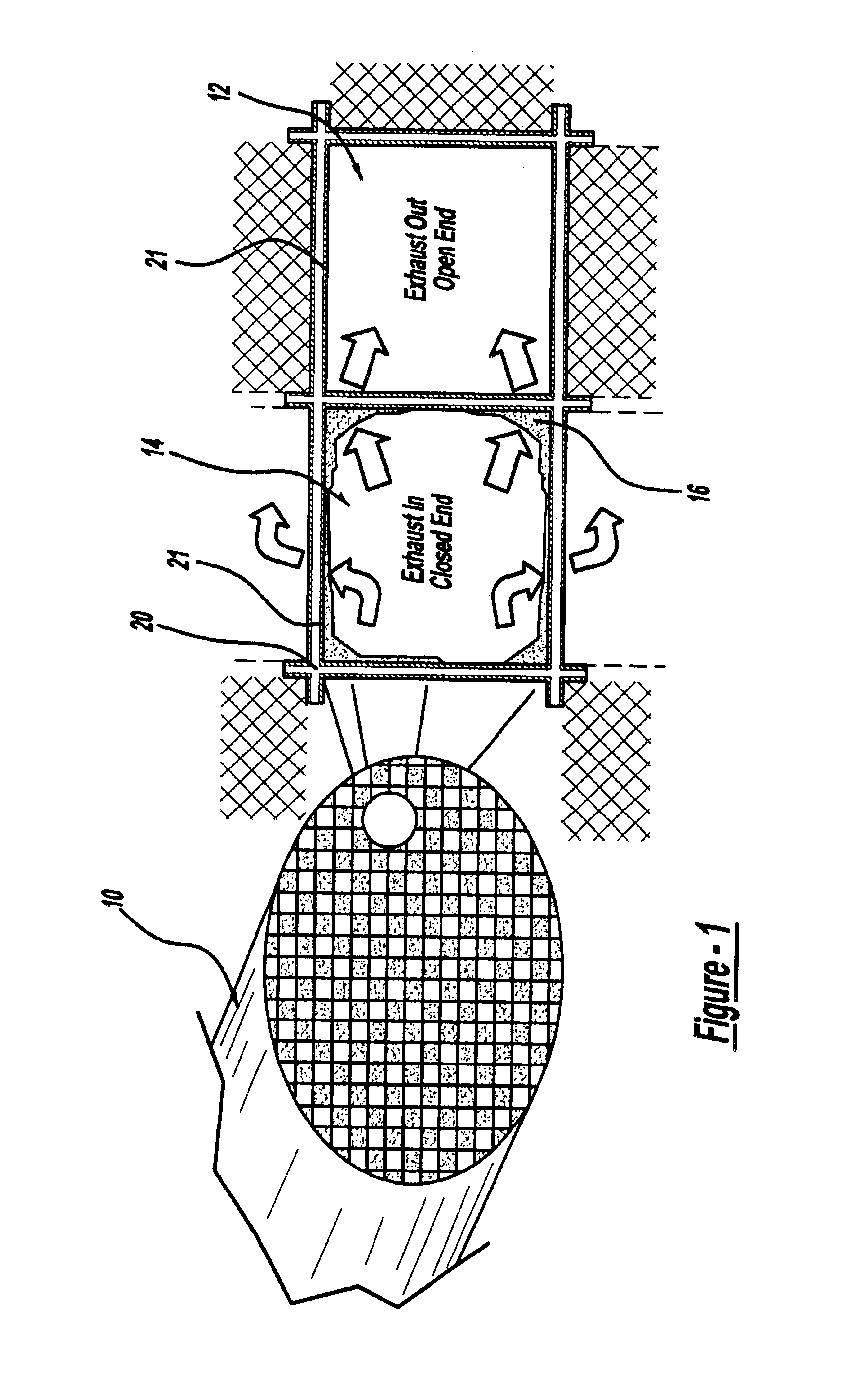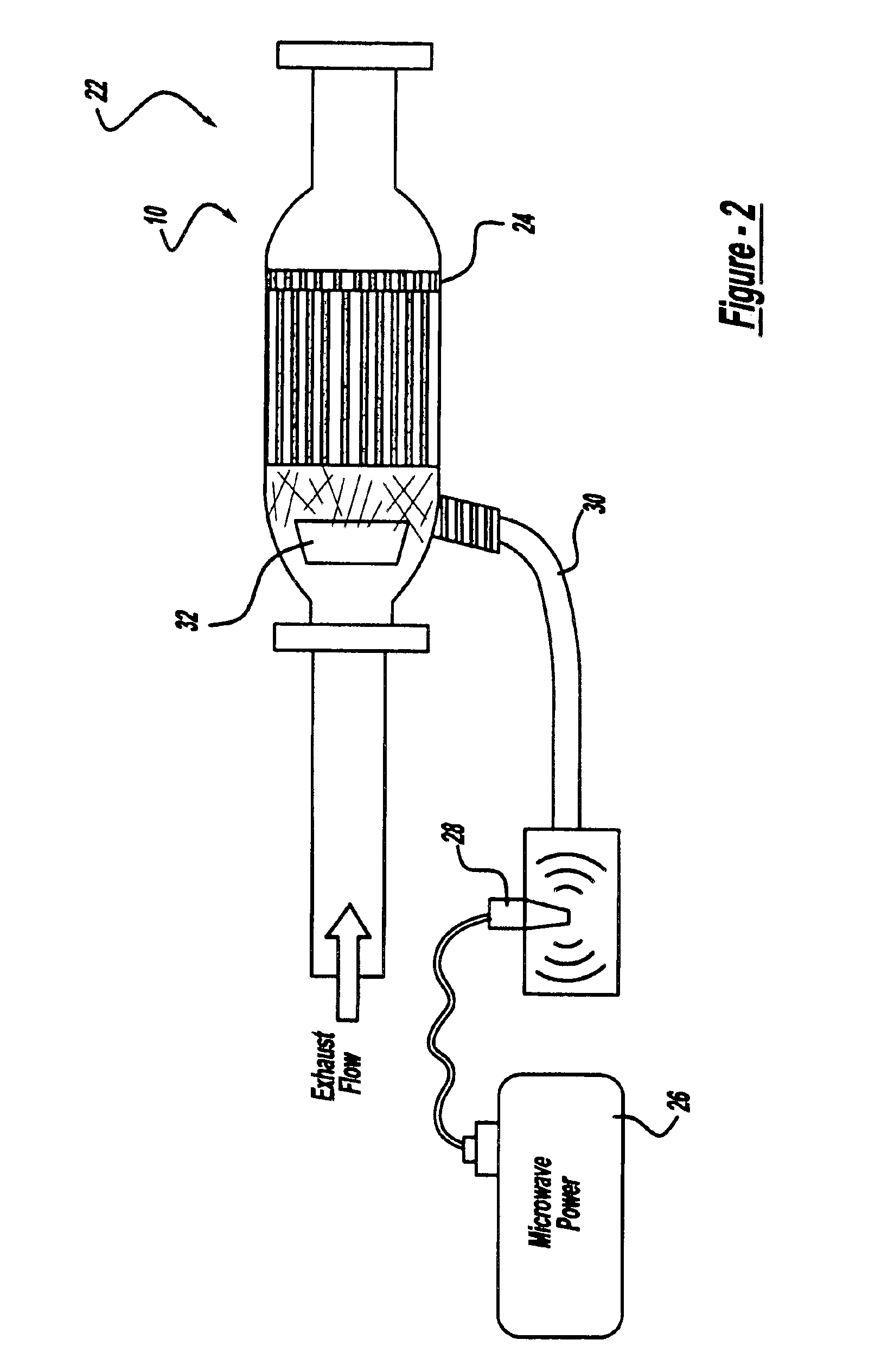Self-mode-stirred microwave heating for a particulate trap
a particulate trap and self-mode technology, which is applied in the direction of colloidal chemistry, machines/engines, separation processes, etc., can solve the problems of less than satisfactory combustion of particulates in the particulate trap, excessive temperature rise, thermal runaway, etc., and achieve the effect of removing particulate buildup
- Summary
- Abstract
- Description
- Claims
- Application Information
AI Technical Summary
Benefits of technology
Problems solved by technology
Method used
Image
Examples
Embodiment Construction
FIG. 1 is a diagrammatic drawing of a typical wall flow monolith particulate trap 10“particulate trap” used in diesel applications. The particulate trap 10 includes alternating closed cells / channels 14 and open cells / channels 12. Exhaust gases such as those generated by a diesel engine enter the closed end channels 14, depositing particulate matter 16 and exit through the open channels 12. The walls 20 of the particulate trap are preferably composed of a porous ceramic honeycomb wall of cordierite material, but any ceramic honeycomb material is considered within the scope of the present invention. The walls 20 of the particulate traps in the preferred embodiment are coated with materials 21 having SMS properties and decreasing loss tangent beyond the Curie temperature. In alternate embodiments of the present invention, SMS materials may be configured as walls or end plugs in the particulate trap 10. The SMS materials include, but are not limited to, magnetic ferrites having the gene...
PUM
| Property | Measurement | Unit |
|---|---|---|
| microwave transparent | aaaaa | aaaaa |
| Curie temperature | aaaaa | aaaaa |
| microwave-absorbing | aaaaa | aaaaa |
Abstract
Description
Claims
Application Information
 Login to View More
Login to View More - R&D
- Intellectual Property
- Life Sciences
- Materials
- Tech Scout
- Unparalleled Data Quality
- Higher Quality Content
- 60% Fewer Hallucinations
Browse by: Latest US Patents, China's latest patents, Technical Efficacy Thesaurus, Application Domain, Technology Topic, Popular Technical Reports.
© 2025 PatSnap. All rights reserved.Legal|Privacy policy|Modern Slavery Act Transparency Statement|Sitemap|About US| Contact US: help@patsnap.com



